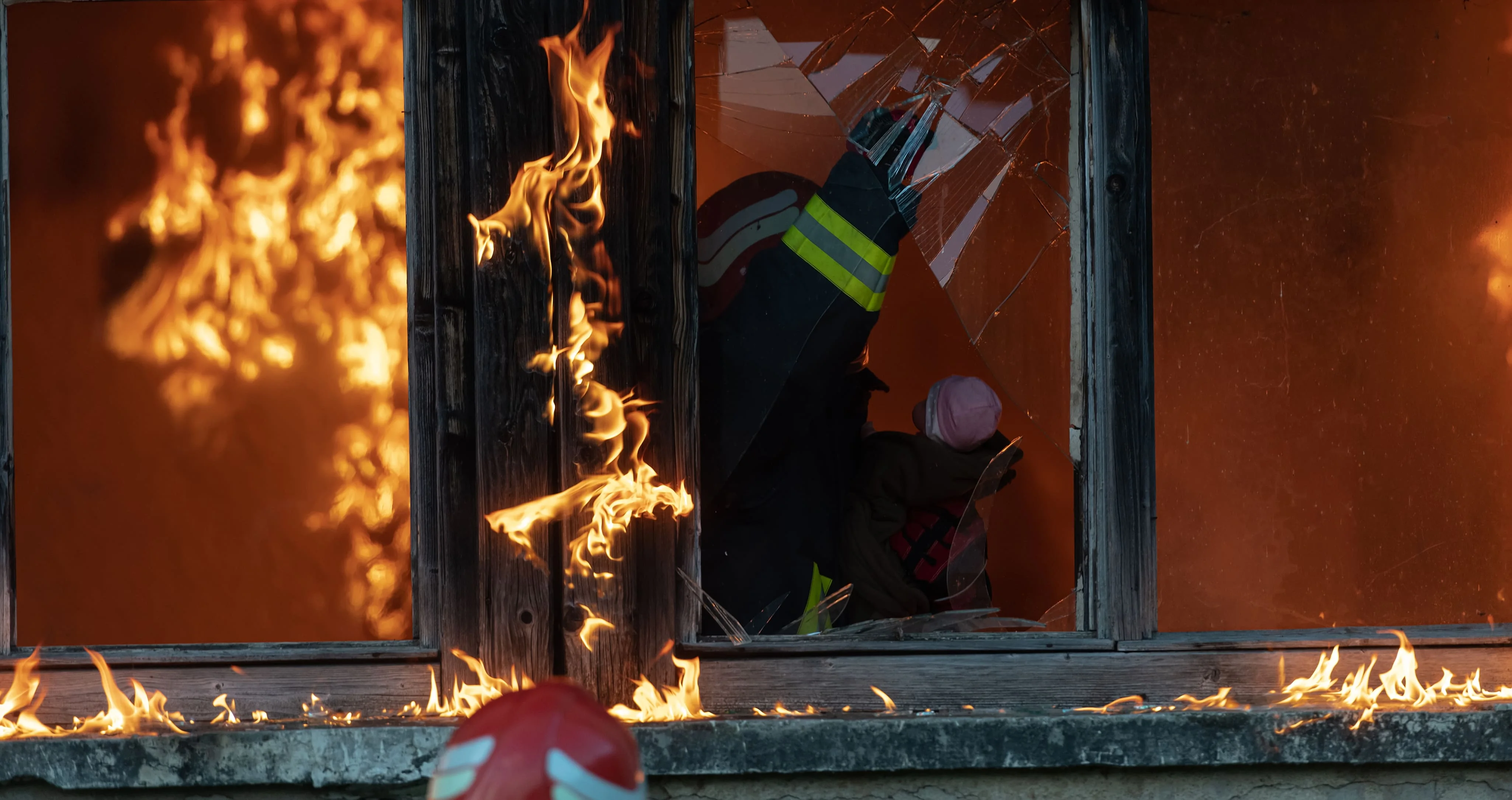Mastering Kirk's Fire Investigation 7th Edition: A Comprehensive Guide for 2024


Fire investigation is a field that is continually evolving. Those who work in the field must combine knowledge of science and engineering with a keen eye for detail and detective skills. Along with this knowledge and skills, fire investigators must also follow guidelines and best practices. There’s no better resource for this in the industry than Kirk’s Fire Investigation 7th Edition.
Kirk’s Fire Investigation has long been the cornerstone text for both new or aspiring fire investigators and those looking to stay up-to-date and improve their own methodologies. In this article, we’re going to explore in detail the knowledge contained in Kirk’s Fire Investigation 7th Edition, and how modern tools like BlazeStack are aligned with the text and help to improve efficiency.
Table of Contents
- Fire investigation is a complex field, requiring investigators to adopt a multidisciplinary approach to each investigation.
- Kirk’s Fire Investigation 7th Edition is an indispensable resource for understanding every element of fire investigation, from fire behavior to evidence collection, and more.
- Each year, we see new, advanced technology coming to the field of fire investigation. Tools like BlazeStack that enhance accuracy and efficiency, are an important element of this.
- Fire investigators must always operate with the highest level of legal and ethical standards.
- Real-world case studies are an invaluable resource for insights into how the field can adapt and grow in the future.
Basics of Fire Investigation
The field of fire investigation is more complex than many people realize. The role of a fire investigator isn’t just to determine if a fire was caused intentionally, but rather to apply the scientific method to determine how and where a fire started, along with contributing factors to answer the question of “why”.
This requires attention to detail, respect for a systematic approach, sharp observation skills, and the ability to take multiple layers of complex information and form a hypothesis.
In other words, fire investigators are scientists out in the real world, and they must ensure that their investigative process is smooth, reliable, credible, and thorough. They must follow guidance, laws, and best practices in every area.
This includes everything from the collection of evidence and scene documentation to interviewing witnesses and following through with accurate and complete report writing.
For a more thorough understanding of the field of fire investigation, our comprehensive Fire Investigation Guide outlines procedure information and best practices for fire investigations. This includes how the scientific method is key to the field of fire investigation.
The Scientific Method in Fire Investigation
Every investigation should follow a systematic approach that includes the scientific method.
Observation
The very first step in any investigation is observation. When a fire investigator approaches the scene of a fire, their first task is to observe the surroundings, looking for visual clues and speaking with witnesses when available. The observation stage is all about collecting the pieces of the puzzle, with no detail being too small to take note of.
Once collected, a fire investigator begins to look at how all of these pieces fit together in order to form a hypothesis.
Hypothesis Formulation
Fire investigators look at all the evidence and form possible explanations of the cause and origin of the fire. In the beginning, there is usually more than one hypothesis formed, as it’s the investigator's duty to consider every possible cause.
Possible hypotheses might include electrical causes, such as bad wiring, or a rodent that has chewed through a wire, or human causes – both accidental and intentional.
Testing
The next step is testing. In the case of fire investigation, this includes conducting experiments and testing to either validate or discard each hypothesis. Some components a fire investigator might test or investigate include testing for the presence of accelerants, doing a thorough investigation of electrical components, or using specialized software to reconstruct the scene.
Conclusion Drawing
Drawing conclusions is the last step of the scientific method. Fire investigators take their evidence-based findings based on the results of testing and validating, and use them to determine the origin and cause of a fire.
It’s important that fire investigation conclusions are developed with keen analytical skills. These conclusions are often used to determine insurance outcomes and as evidence in legal cases.
This scientific process should be applied to the investigative procedures outlined in Kirk’s Fire Investigation 7th Edition.
Role of a Fire Investigator
Evidence Collection
One of the first and most important tasks for a fire investigator on the scene is evidence collection. The first part of this process is identifying the fire scene evidence. Investigators will look at debris and electrical components and assess if accelerants were used.
The second component of evidence collection is preservation. Proper evidence preservation is critical to protecting the integrity of the evidence and the overall investigation. Fire investigators use arson investigation tools to assist with this process.
Scene Documentation
Fire scene documentation includes taking photographs of the scene, meticulous note recording, and creating other visual representations of the scene, such as sketches.
Modern tools, including drones and 3D imaging software, can be used to document or recreate the scene in greater detail. Fire departments can save as much as $100,000 per year by using these types of automated investigation tools.
It’s critical that fire investigation records contain proper documentation of the scene so that they can later be used for analysis and legal proceedings.
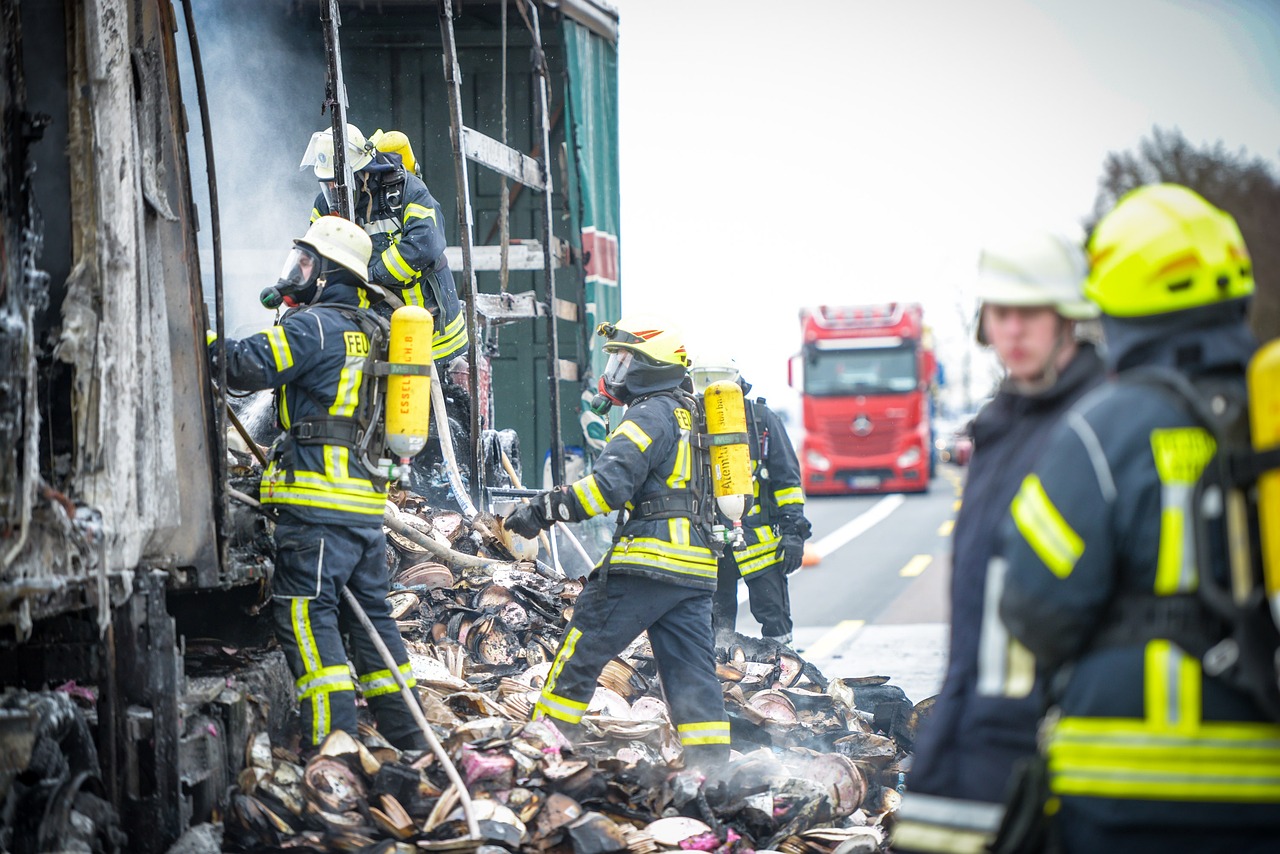
Interviewing Witnesses
Witnesses serve a critical role in fire investigation. Witness interviews can provide insight into events leading up to the fire, and may help lead the investigation with key details about the origin and cause. Fire investigators are responsible for gathering witness statements, which means they also must be able to communicate effectively and possess good interviewing techniques.
Report Writing
A key component of a fire investigator’s role is compiling the fire investigation report. This report outlines all of the investigation findings, including evidence, analysis, and the final conclusion. Detail and adherence to report writing standards are crucial, as these reports are often used for legal proceedings and may be accessed for reference in the future.
A deep understanding of fire behavior, and also how building construction affects it, is essential in the field of fire investigation. Each year, more than 20,000 fires are investigated in the United States. While not every fire investigation is tied to criminal investigations and legal proceedings, it’s frequently the case that they are. As an example, consider the case of a Tesla fire investigation.
Fundamentals of Fire Behavior
Ignition Sources
Identifying fire ignition sources sets the foundation for a fire investigation. By identifying the ignition source, fire investigators can use this information, combined with evidence collection, to form a hypothesis and make a fire origin determination.
Examples of fire ignition sources may include an open flame, such as a candle or pilot light on a gas stove, or electrical sparks. Currently, it’s estimated that 38% of fires are caused by electrical issues.
Flame Spread
Flame spread describes how the flames move through the environment. By doing a flame spread analysis, fire investigators are better able to understand fire behavior and how it progressed. Investigators need to assess both horizontal and vertical flame spread.
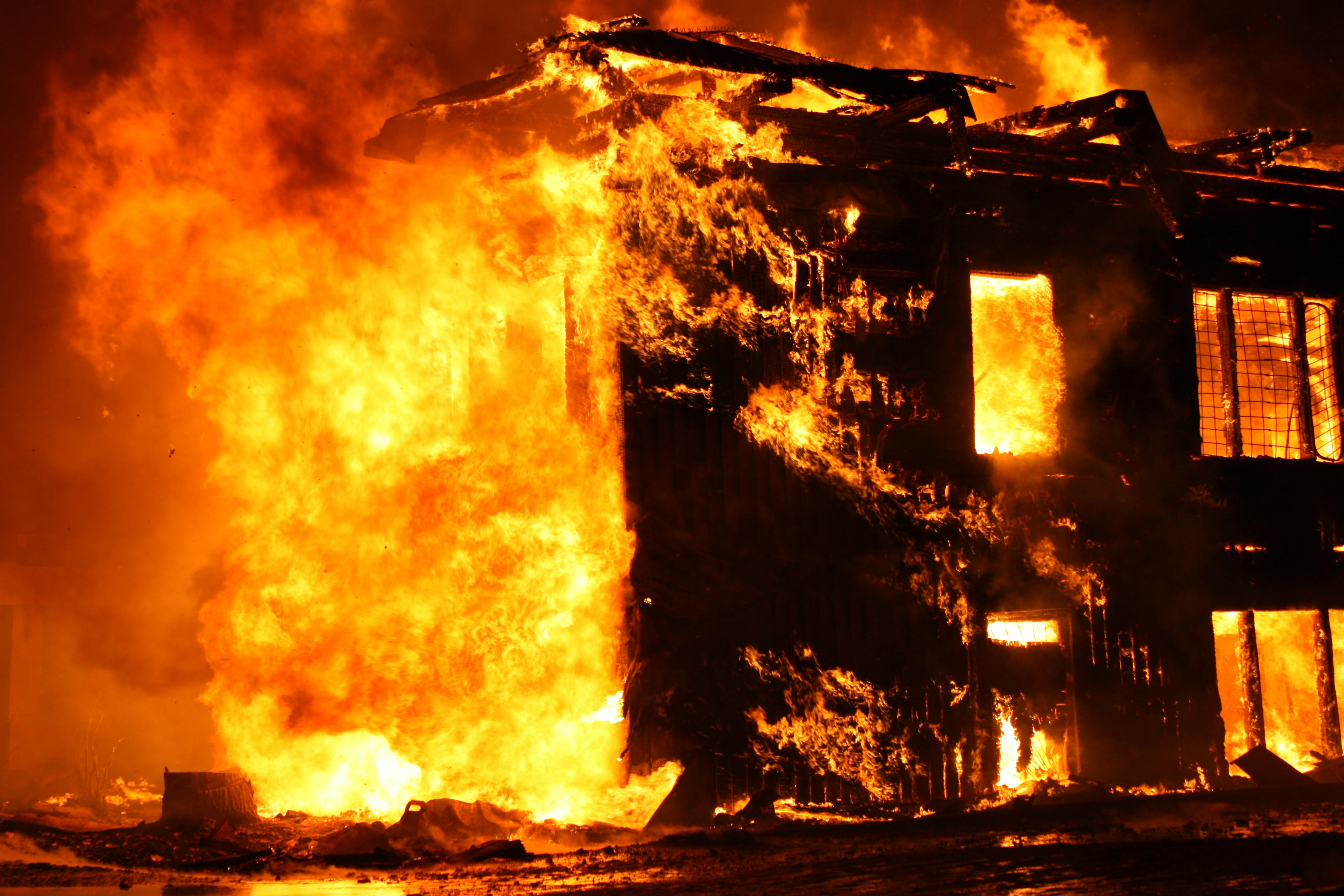
Heat Transfer
Heat transfer is the primary fire growth mechanism. The three methods of heat transfer in fires include conduction, convection, and radiation. Understanding and being able to identify heat transfer in a fire allows investigators to determine how a fire spreads, causing damage to the structure or other materials as a result.
Fire Growth Stages
There are four stages of fire progression and growth. These include the incipient stage, the growth stage, the fully developed stage, and finally, the decay stage.
The incipient fire stage is considered the initial phase of a fire. This is where flames begin to develop. The incipient stage of fire progression provides clues to the fire’s early behavior, along with helping to identify the origin and cause.
The second stage of fire development is the growth stage. This is when the intensity of a fire begins to increase and the fire begins to spread rapidly.
During the fire growth stage, there’s a significant increase in heat production and the resulting damage that occurs. Understanding this stage helps fire investigators identify fire behavior and impact.
In the fully developed fire stage, a fire reaches its peak intensity and maximum spread. At this point in development, understanding the fire intensity is a key component of identifying the impact of the fire on the overall structure and the material contained within.
The final phase of a fire is the decay stage. During the decay fire stage, the intensity of the fire begins to diminish drastically until it reaches the point of being extinguished. This stage provides evidence of the fire’s duration, and the resulting damage or impact.
Building Construction and Fire Behavior
Types of Building Materials
Building materials can either help to slow or escalate a fire, contributing to how the fire spreads. This depends on the building material properties. Materials such as plastic or a wood frame will contribute fuel to a fire. Whereas fire-resistant materials, such as mortar, concrete, or those treated with fireproof sealants will help to contain the spread or growth of a fire.
For more information, our guide to Fire and Explosion Investigation offers more details into building construction and how it influences fire behavior.
Fire-Resistant Construction Techniques
Firewalls in construction are used to help protect the structure in the event of a fire. Their primary purpose is fire containment, and placing them between sections of a building during construction can help prevent the spread of a fire.
Firewalls are a unique construction, in that they’re essentially a “building in a building”. Not only do they prevent the spread of a fire from one area to the next, but they also protect the overall structural integrity of the building when one area is damaged due to fire.
Fire doors in construction are an important safety feature. Fire doors are designed to withstand the heat of fire and contain smoke for a certain amount of time. They help to limit fire containment to specific areas and also help to allow people who may be in the building to exit safely.
Building Design and Fire Spread
Open-plan designs have fewer barriers, meaning that there are fewer opportunities for the fire to be contained. Open-plan fires spread/happen more quickly than those dispersed among contained rooms and can create a number of fire investigation challenges.
Ventilation systems can either help or hinder fire growth and smoke spread depending on the airflow they provide. During a fire investigation, investigators must take into consideration the impact of ventilation systems in fires, and how this might alter the scene.

Evidence Collection Techniques
Physical Evidence Collection
Physical evidence found at fire scenes is the cornerstone of a fire investigation. Physical evidence in fire investigations can assist in helping investigators identify fire patterns, the presence of accelerants, and whether there were electrical components that contributed to the fire. Fire scene evidence collection must be performed with strict adherence to best practices to ensure the accuracy and integrity of every piece of evidence.
Consider reading this guide To better understand arson evidence management and the tools that are available to streamline the process.
Scene Documentation Tools
Detailed fire scene photography is an essential tool in fire scene documentation. By documenting fire scenes from multiple angles via photography, fire investigators create a visual record that can be further analyzed during the investigation. An additional benefit of fire scene photography is that it can capture details that would otherwise be missed by the human eye.

Photographs are effective for capturing details but they can fall short when it comes to providing an accurate spatial representation of the scene. Fire scene sketches fill in this gap. Mapping fire scenes through sketches provides investigators with a critical piece of the puzzle that can later be used in their analysis.
One of the most important tools a fire investigator has at their disposal is those that help to streamline the process of documentation and record keeping. Tools like BlazeStack documentation software offer a single centralized platform for digital fire investigation records.
Examples of evidence, data, and notes that can be stored and organized electronically include witness statements, photos, sketches, and additional notes from the case.
Specialized Fire Investigations
Electrical Fire Investigations
Electrical issues are among the most common causes of fires. Fire investigators need to look for specific signs of electrical causes, and determine the potential point of origin.
Any default in electrical components can create a situation where fire is a high risk. Electrical fire causes may include short circuits, faulty wiring, and overloaded circuits. A foundation of knowledge in fire cause and analysis, particularly common electrical fire causes helps fire investigators in identifying fire origin.
When functioning properly, circuit breakers are critical electrical system components that are designed to prevent overload. By protecting against overload and short circuits, they serve an important role in preventing electrical fires.
Malfunctioned circuit breakers are a common cause of electrical fires. Electrical fire investigation should include circuit breaker inspection to help provide clues to the fire’s origin.
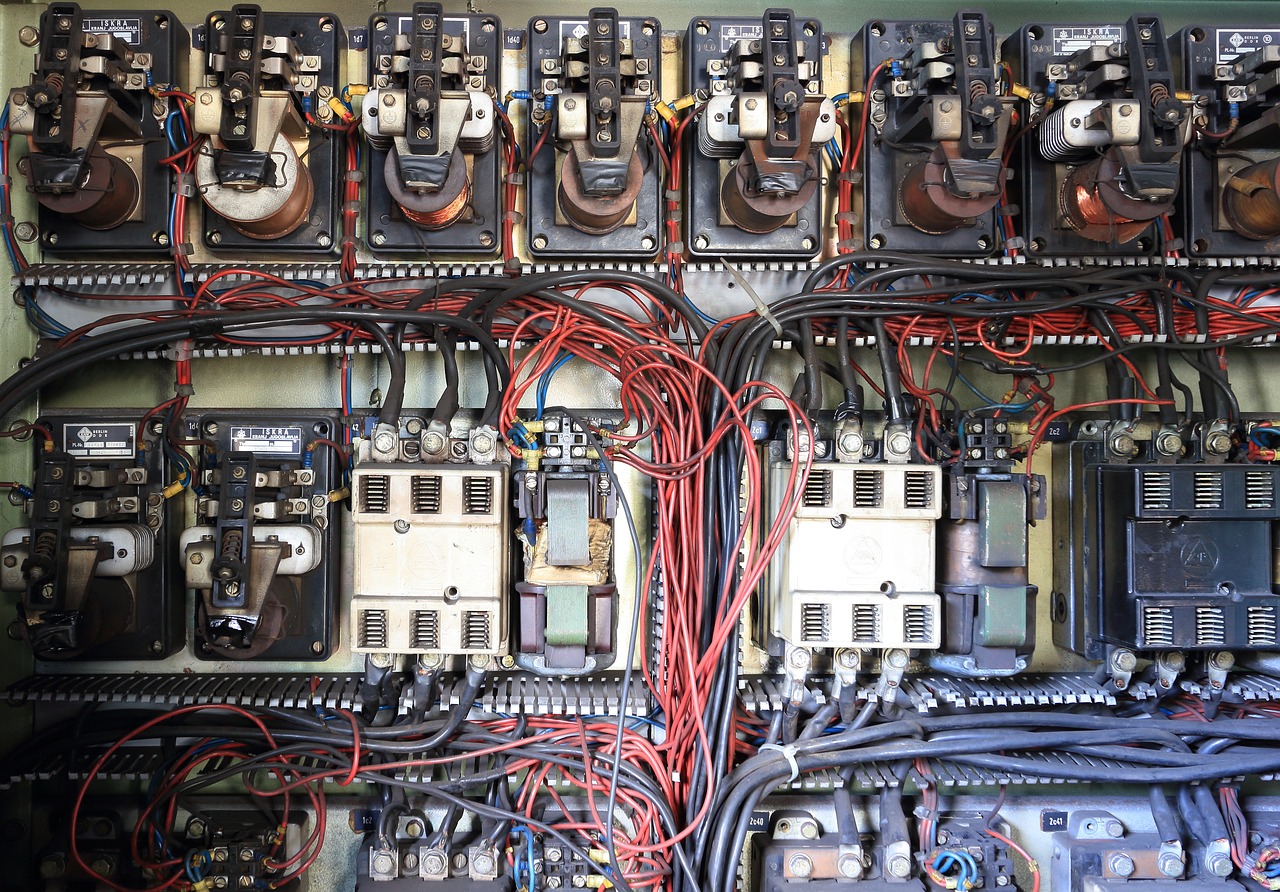
Proper inspection of wiring is a key component of collecting electrical fire evidence. Wiring inspection can reveal evidence of short circuits, arcing, and insulation failure – all of which can be determined as a cause of electrical fire.
Fire-Related Deaths and Injuries
Investigating Fire-Related Fatalities
Determining the cause of death related to a fire is a complex process that involves analyzing autopsy and toxicology reports. Fire-related fatalities are caused by severe burns, smoke inhalation, and a number of other fire-related factors. Sometimes there are multiple factors, both fire-related and otherwise, that investigators need to consider.
In the event of a fire-related fatality, investigators are required to analyze autopsy reports, which provide detailed information about the cause of death. Autopsy reports in fire investigations help investigators better understand the factors that contributed to the death and are key for fire-related death analysis.
It’s often thought that toxicology reports are only used to detect the presence of drugs or intoxicating substances that may have contributed to a death. In the case of toxicology reports for fire investigations, the noted presence of toxic substances is key in determining exactly how the fire resulted in death.
For example, a smoke inhalation analysis would show the presence of carbon monoxide in the fire victim’s system.
Injury Analysis
Burn pattern analysis on fire victims helps fire investigators better understand the intensity of the fire and how long the injured person was exposed to flames. A fire injury investigation provides details about both the fire’s behavior and how the victim responded during the incident.
Smoke inhalation is common in fire victims, but the extent and type can provide information about the overall impact of the fire on the victim, as well as details about the fire’s dynamics.
Common smoke inhalation symptoms looked for in fire victim analysis include shortness of breath, throat burning, wheezing, noisy breathing, difficulty speaking, and compromised lung or heart function.
Integration with Modern Technology
Use of Digital Tools in Fire Investigation
Fire investigation software has completely changed how fire investigators manage their cases. Fire investigation software, like the option from BlazeStack, features tools such as case management systems, organization for digital evidence collection, and mobile applications to streamline the investigation process.
Case management systems streamline the entire process of fire investigation management. These tools offer one centralized platform for storing evidence and making it accessible to all stakeholders in the investigation. Progress can be tracked, and everyone can be updated as needed to improve investigation efficiency.
Digital evidence collection has become central to the fire investigation process. Electronic evidence storage tools provide a single place to collect and organize digital evidence, including photos and videos, along with electronic documents.
Mobile investigation tools enable fire investigators to collect, record, and analyze evidence and data right at the scene. With real-time data entry, we see improved efficiency and a significant reduction in reporting errors. For example, witness testimony can be entered as it is given, and shared in real-time.
Mapping tools and GPS in fire investigations provide a level of accuracy with spatial data that human reporting falls short of. Fire scene mapping that is done at the scene can be used for scene reconstruction, providing important insights into the fire’s behavior, origin, and cause.
Recent Developments in Fire Investigation
Advances in Fire Investigation Techniques
Forensic fire investigation involves gathering evidence and using specialized forensic analysis tools to provide deeper insights into various factors related to fire incidents. Advanced fire investigation includes utilizing 3D scene reconstruction to create a more comprehensive picture of fire behavior and performing chemical analysis to determine if accelerants contributed to fire behavior.
Both of these types of forensic analysis tools provide a deeper understanding of what happened at the scene and the contributing dynamics.
The field of fire investigation is one that is continually evolving, including new technologies and means of collecting and analyzing evidence. Fire investigators must also continually learn, grow, and adapt in the field, and this includes updating their fire investigation methods.
Updated fire investigation protocols are aligned with new technologies and an evolving understanding of fire dynamics. For example, experienced fire investigators have been required in recent years to adapt their investigation and case management process based on new software solutions that streamline the process and increase accuracy.
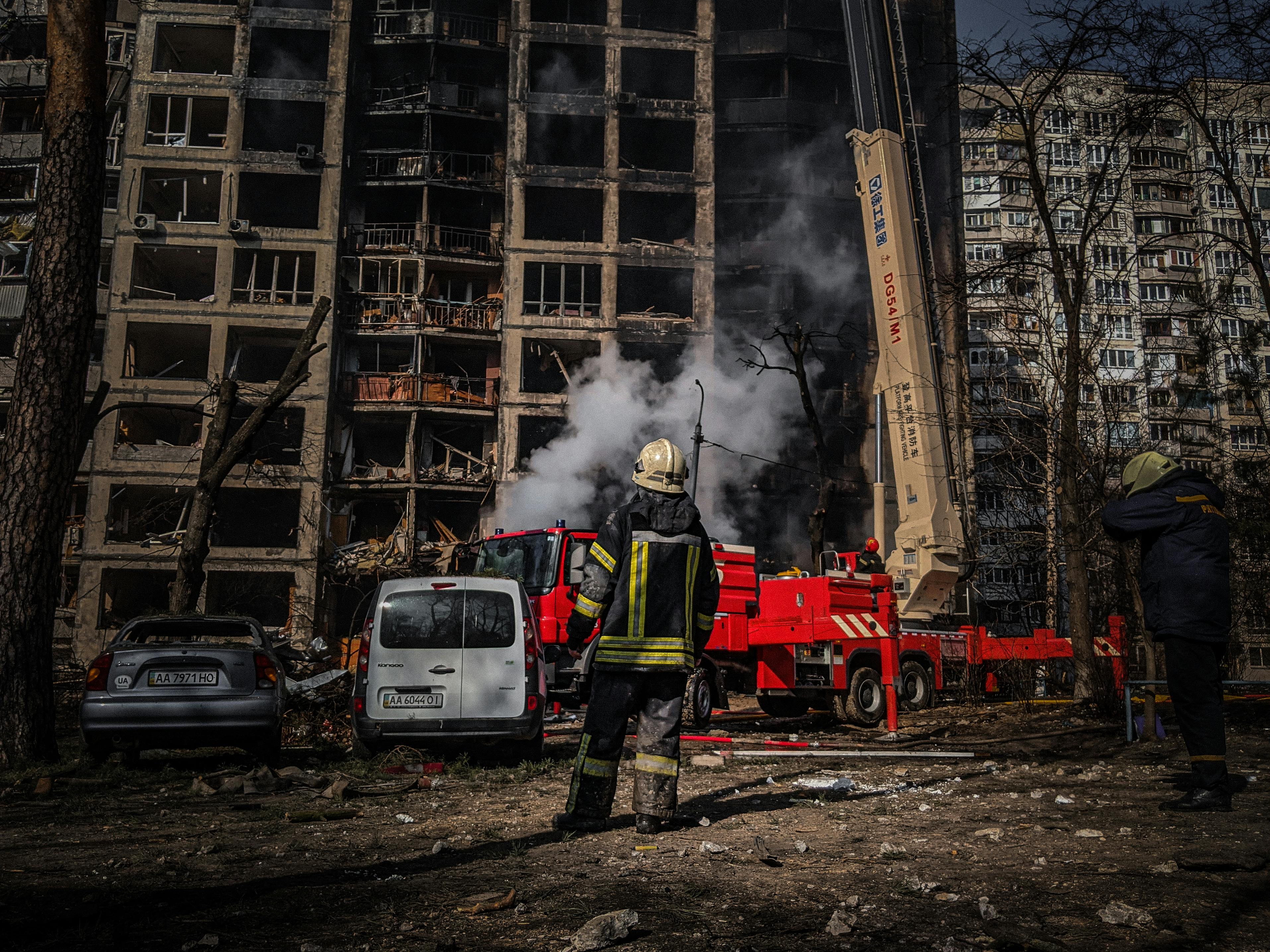
High-Profile Fire Investigations
High-profile fire investigations are important for advancing our understanding of the field of fire investigation. Many high-profile fire investigations involve significant loss of property and can serve as key learning opportunities for experienced and aspiring fire investigators.
Notable Fire Investigations in Recent News
One of the most newsworthy high-profile fire cases in recent times is the Tesla fire investigation. In March of 2024, a suspected arson attack took place at Tesla's factory location near Berlin. The suspected arson incident involved the factory’s power supply and has garnered a great deal of attention from both the media and German officials.
The incident occurred on March 8, 2024, when a suspected arson attack triggered a power outage at the Tesla plant. Authorities state that a fire was intentionally set on a high-voltage power line connected to the factory. In addition to the Tesla facility, surrounding residents and healthcare facilities were also affected.
The Tesla fire incident resulted in thousands of employees being evacuated from the building and completely shut down production for a period of time.
What makes the Tesla fire incident notable is that not only is there suspected arson involved, but it is currently suspected that terrorism was involved. The fire happened at a time when environmental protestors were located in a nearby forest, protesting the expansion of Tesla into the area.
The investigation has now been taken over by Germany’s top prosecutor, who will further investigate and conduct deeper evidence analysis to determine if and when terrorism charges will be issued.
In May of 2024, a fire broke out at Gaza’s Central Library. The Gaze University Library fire is an interesting case for fire investigators to study for several key reasons.Social media first came into play as images began circulating of Israeli soldiers holding books as fire burned behind them in the library.
In addition to this, the current geo-political climate in the area makes this one of the most politically sensitive fire investigations in modern times.
The Gaza library fire caused significant damage to the building and the contents inside. The incident drew immediate attention due to tensions with the Israeli-Palestinian conflict. The allegations of arson against Israeli soldiers are one that demands special attention and an extremely thorough fire incident overview.
This specific incident presents many significant fire investigation challenges. Restricted access to the scene has made evidence collection extremely difficult, along with witness testimony that has been rife with inconsistencies, potentially influenced by the political tensions in the area. This case presents a unique learning opportunity for fire investigators who are required to navigate tense and sensitive situations.
Forensic fire scene reconstruction allows fire investigators to consider all the potential hypotheses on when, how, and why a fire started.
Principles of Fire Scene Reconstruction
Fire Dynamics
Fire dynamics are the analysis of how fires begin, how they spread, and how fire behaves as it develops. Understanding the dynamics of a fire incident through fire behavior analysis can help an investigator determine which factors may have influenced fire behavior.
Fire investigators consider the heat release rate or HRR to determine how much energy the fire releases over time. Through fire intensity analysis, investigators are able to determine the fire’s growth and in which ways the intensity changed throughout the life stages of the fire.
This evaluation is critical for understanding the fire’s progression and how it impacted the structure and surrounding area.
Different types of fires, with varying behaviors, produce and release smoke in unique ways. The analysis of smoke production is one of the key fire behavior indicators that investigators can look at to better understand the fire’s dynamics. Analyzing smoke production can also provide clues as to whether or not accelerants were involved.
Fire Patterns
One of the easiest to identify fire patterns is the V-pattern. Named due to its shape, the V-pattern points fire investigators to the origin and potentially the source of the fire.
The base of the V is considered to be the point of origin, and the upward strokes of the V represent the initial vertical spread of the flames. V-patterns are considered reliable evidence in a fire origin determination.
Fire investigators must document and study burn patterns at the scene of a fire incident. Burn patterns play a critical role in fire progression analysis, providing details about the progression and intensity of a fire, as well as its duration.
The analysis of burn patterns is an important puzzle piece in determining the events leading to the fire, and contributing to its spread.
Fire investigators are responsible for the ethical investigation and handling of evidence related to a fire incident. Investigations are often referred to for insurance purposes and legal investigations.
Legal Framework for Fire Investigations
If a fire investigator fails to follow the proper legal framework for an investigation, the evidence and the entire investigative process will lose credibility and become inadmissible.
Evidence collection protocols are put in place to maintain the integrity of all evidence related to the investigation. Protocols must be followed to prevent contamination of evidence, ensuring that all evidence is properly labeled, and that evidence is stored and organized in a way that preserves the fire investigation’s integrity as it moves through the chain of custody.
Evidence often changes hands within the chain of custody multiple times during a fire investigation. It is essential that a detailed record of evidence documentation exists, starting from the moment the evidence is collected all the way through its being presented in court. Without maintaining proper documentation, the integrity of the evidence may be brought into question, making it inadmissible in court.

Courtroom Testimony
Expert Witness Preparation
In cases where expert testimony is required, a fire investigator may be called as a witness to deliver a courtroom testimony. As part of their expert witness preparation, the fire investigators should be prepared to answer inquiries about their findings and deliver their responses clearly and in a convincing manner.
Fire investigators should be able to take the complexities of fire investigation and convey their findings in a way that is understandable for the average layperson.
Reading a report such as the 7 Steps of Fire Investigation can help both aspiring fire investigators and those serving as a jury to better understand the steps involved in the investigational process.
Cross-Examination Strategies
When providing expert fire investigator testimony in court, the investigator may be questioned by both the prosecution and the defense. Depending on the investigator’s findings, it’s often the defense that presents a cross-examination of the original testimony.
Fire investigators should be well-prepared and knowledgeable of cross-examination strategies. During cross-examination, the attorney will attempt to uncover inconsistencies in the testimony or find proof that the evidence or investigation wasn’t handled according to protocol. It’s important to provide expert testimony based only on facts, and that the investigator is clear and concise when answering questions.
Analyzing real-world fire investigation cases provides learning experiences and opportunities for improvement.
Case Study: The Station Nightclub Fire
On February 20, 2023, the United States saw one of the deadliest nightclub fires in its history. The Station Nightclub fire resulted in hundreds of injuries and one hundred fatalities. It was later determined that the nightclub fire incident was the result of pyrotechnics that set ablaze highly flammable soundproofing foam. Due to the dynamics of the elements causing the fire, it spread at a high rate, resulting in intense heat and massive loss of life.
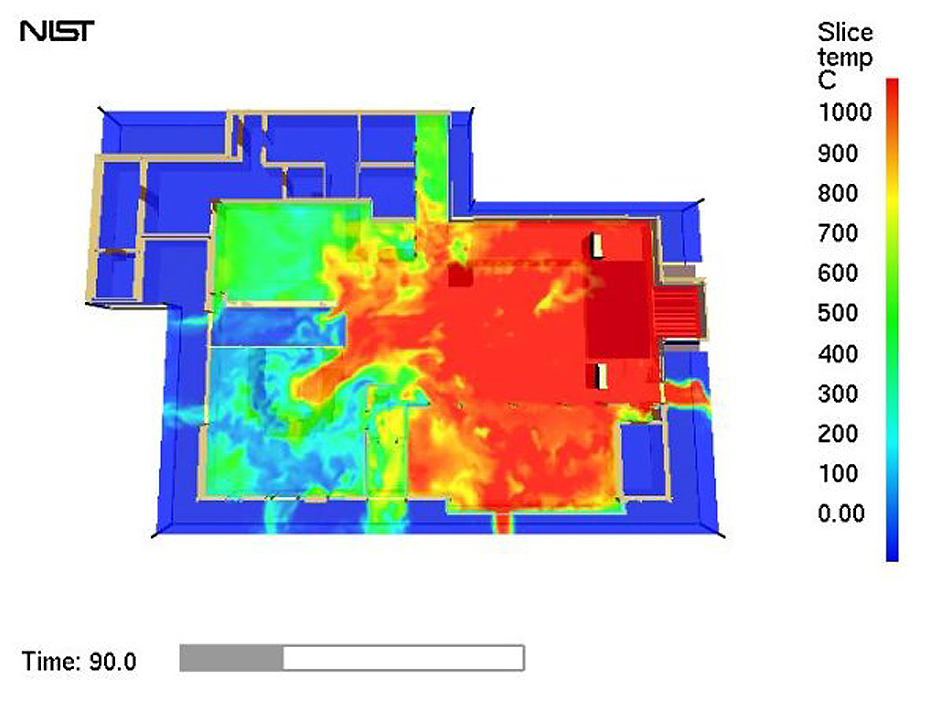
Investigation Findings
The immediate cause of the fire was the combination of pyrotechnics and highly flammable materials. However, through the investigation, it was determined that the club had committed multiple fire code violations.
These included blatant disregard of fire safety regulations. There was overcrowding well beyond the legal maximum capacity of the venue, and not providing sufficient emergency exits for the size of the crowd.
Case Study: Grenfell Tower Fire
The Grenfell Tower Fire in 2017 was one of the deadliest structural fires in the UK. The tower, located in North Kensington of West London, was a 23-story residential structure. The high-rise fire incident started in the kitchen of a flat on the fourth floor, but rapidly escalated, engulfing all four sides of the structure.
Investigation Findings
The fire investigation revealed the violation of multiple building safety regulations. The fire was believed to have spread via the use of combustible cladding around the building. When firefighters arrived, the fire within the apartment appeared manageable. However, a curtain that was hanging outside the window was inflamed and caused an ignition with the combustible cladding.
The fire safety findings also indicated inadequate fire safety measures, which resulted in many residents “waiting it out” in their flats, as they were told the structure of the building would ensure the fire would be contained within the unit.
As a result of the investigation, a civil settlement was reached in 2023, for the hundreds of people affected by the fire.
Fire investigation case management software has elevated standards and streamlined the investigation process. Let’s take a look at how BlazeStack enhances case management in fire investigation.
Benefits of Using BlazeStack
BlazeStack offers a centralized data storage platform for every type of investigation data. This includes visual elements, such as photos, videos, and sketches, as well as field notes and witness statements. BlazeStack data management ensures that all information and evidence related to a fire investigation is stored securely, protecting the investigation's integrity while also ensuring the evidence is accessible through the chain of custody.
To learn more about how to use BlazeStack for educational and fire investigation training purposes, read BlazeStack Classroom Edition.
Many fire investigators will tell you that report generation is one of the more mundane tasks of their jobs, but it’s also a critically important component. BlazeStack offers automated report generation to streamline the reporting process while saving both time and financial resources within the department. All BlazeStack reports are NFPA-921 compliant.
Real-Time Collaboration
With BlazeStack, fire investigators are able to offer real-time collaboration with team members and those along the chain of custody. BlazeStack collaboration offers task assignment and tracking, ensuring that all team members are on the same page and that resources are being used as efficiently as possible during the investigation.
BlazeStack communication tools allow for seamless, secure communication for fire investigators to share information related to the investigation with team members. Real-time, secure communication enhances collaboration efforts, as well as improving efficiency and accuracy throughout the investigation.
Throughout this guide, we’ve taken a look at the essentials covered in Kirk’s Fire Investigation 7th Edition. Guidance and best practices in fire investigation are continually evolving, but tools like BlazeStack can streamline the process and ensure the investigation processes meet current standards.
We’ve covered everything from the basics of the scientific process to understanding the complexities of fire dynamics and the legal and ethical aspects of fire investigation. Here are a few of the key takeaways.
- Fire investigators use the skills of scientists, researchers, and engineers to discover the cause and origin of fires.
- Each fire investigation should be conducted systematically, beginning with adherence to the scientific method.
- Modern tools like BlazeStack are essential for streamlining evidence collection and documentation, as well as for improving efficiency and accuracy in reporting.
- Fire investigators must operate with legal and ethical standards in mind at all times to ensure the integrity of the investigation.
- Modern, real-world case studies provide learning opportunities for how to improve fire investigation procedures. Fire investigation learnings offer the opportunity to look at cases with higher levels of complexity.
The field of fire investigation requires a deep level of knowledge and understanding of investigative procedures, legal guidelines, ethical standards, and the scientific element of how fire behaves. It’s a complex and multifaceted field, to say the least. Kirk’s Fire Investigation 7th Edition provides the backbone while using tools like BlazeStack to improve processes and outcomes.
With BlazeStack, not only is the investigation conducted more efficiently and accurately, but there is peace of mind in the security offered. BlazeStack ensures that all data related to an investigation remains safe and secure.
As we reach the conclusion of our Kirk Fire Investigation, we encourage you to reach out to us and learn more about BlazeStack benefits today.
Trusted by Public and Private Investigator Teams Everywhere
Whether you're a big state agency, a small local fire department or somewhere in between, Blazestack software (NFPA 921® & CJIS compliant) collects fire scene data and generates standardized origin and cause reports in a fraction of the time of other methods.
To learn more about Blazestack, give us a call at (866) 303-4344 or email us at support@blazestack.com
Get Your Free 14-Day Trial and Custom Price Quote Now
We'll let Blazestack do the talking. Try it out right now for free.
A member of our staff will be in touch shortly.

